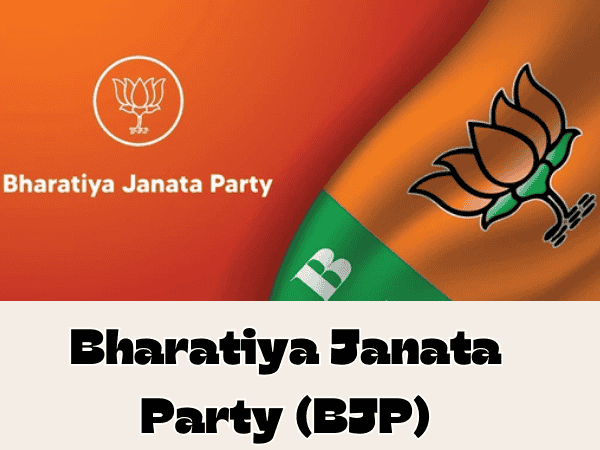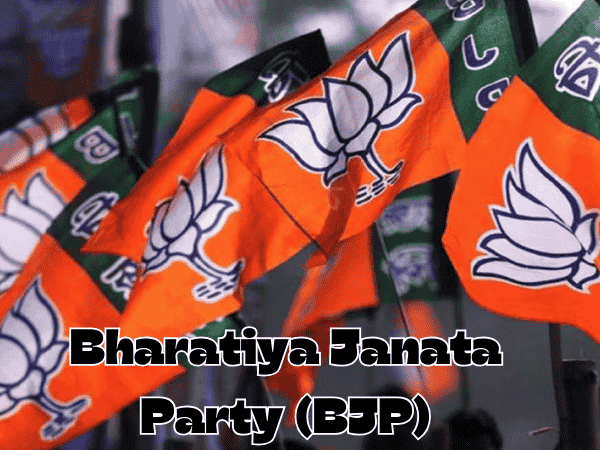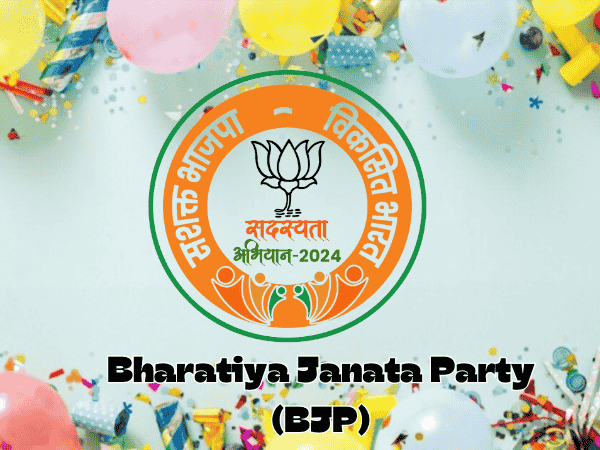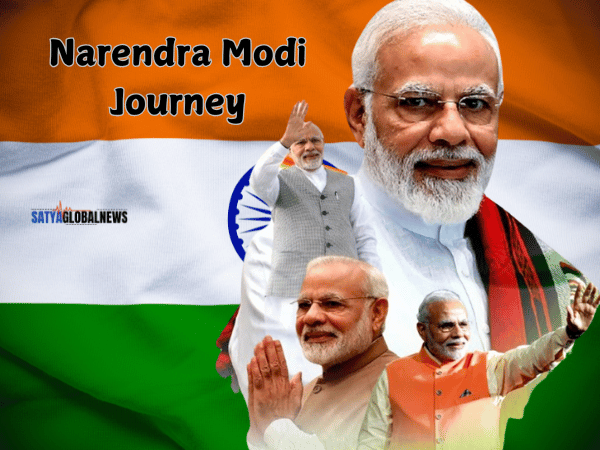Bharatiya Janata Party (BJP) is one of the largest political parties in India and plays a significant role in shaping the country’s political landscape. Founded in 1980 by prominent leaders like Atal Bihari Vajpayee and Lal Krishna Advani, the BJP is rooted in the ideology of Hindutva, a form of Hindu nationalism promoted by the Rashtriya Swayamsevak Sangh (RSS). The party advocates for a strong India, both economically and militarily, and emphasizes national security, economic reforms, and cultural preservation.

With its rise to power in the 1990s and the leadership of Atal Bihari Vajpayee, the BJP became a dominant force in Indian politics. The party’s prominence skyrocketed in the 2010s under Narendra Modi, who led the BJP to significant victories in the 2014 and 2019 general elections. The party’s policies focus on economic development, digital infrastructure, and social welfare initiatives, like the Swachh Bharat Abhiyan (Clean India Mission) and Make in India.

However, the BJP’s agenda has also sparked criticism, particularly over its perceived emphasis on Hindu nationalism, which some argue marginalizes religious minorities. Key policies, such as the Citizenship Amendment Act (CAA) and the National Register of Citizens (NRC), have led to widespread protests, with critics accusing the party of undermining India’s secular framework.
Despite these controversies, the BJP remains a dominant political force in India, continuing to influence the country’s governance, policies, and national identity.
Bharatiya Janata Party (BJP)
The Bharatiya Janata Party (BJP) is one of India’s two major political parties, alongside the Indian National Congress. The BJP is a right-wing party that promotes Hindu nationalism, economic reforms, and a strong central government. It is a key player in Indian politics and has significantly shaped the country’s policies and political discourse.

READ MORE :-Narendra Modi Journey:– A Journey of Leadership and Resilience
History and Formation
The BJP was founded on April 6, 1980, by Atal Bihari Vajpayee and Lal Krishna Advani as a successor to the Bharatiya Jana Sangh (BJS), which was formed in 1951 by Syama Prasad Mukherjee. The Bharatiya Jana Sangh had been aligned with the Rashtriya Swayamsevak Sangh (RSS), a Hindu nationalist organization, and the BJP continues to maintain close ties with the RSS.
The BJP’s formation came after the merger of the BJS with other smaller groups, which had previously supported the Janata Party coalition that came to power in the 1970s. The Janata Party broke down due to internal differences, leading to the creation of the BJP.
Ideology
The BJP is primarily known for its advocacy of Hindutva, a form of Hindu nationalism that seeks to promote and preserve Hindu culture and values in Indian society. However, over time, the party has also focused on economic growth, development, national security, and good governance.
Key elements of the BJP’s ideology include:
Hindutva: A vision that promotes Hindu culture as the central tenet of India’s national identity, often associated with the RSS.
Nationalism: The party emphasizes a strong sense of national pride and the unity of India, often prioritizing India’s sovereignty and security in foreign and defense policies.
Economic Reforms: The BJP supports free-market reforms, the promotion of industrial growth, infrastructure development, and the encouragement of foreign investment.
Cultural Preservation: The BJP aims to safeguard India’s ancient cultural heritage, particularly Hindu traditions and values.
Leadership and Key Figures
Atal Bihari Vajpayee: One of the founding leaders of the BJP, Vajpayee served as the Prime Minister of India three times (1996, 1998–2004). He was the first BJP leader to become Prime Minister and is regarded as one of India’s most respected political figures.
Lal Krishna Advani: Another founding member, Advani played a pivotal role in the party’s rise to prominence, particularly through his involvement in the Rath Yatra in the 1990s, which galvanized the party’s Hindutva ideology and led to significant political gains for the BJP.
Narendra Modi: The current Prime Minister of India, Modi became the leader of the BJP in 2013 and led the party to victory in the 2014 and 2019 general elections. His leadership has defined the party’s trajectory in recent years, with a focus on economic development, security, and nationalism.
Amit Shah: The current president of the BJP, Amit Shah has been a key strategist behind the party’s recent electoral successes, including its expansion into regions where it had previously not been a dominant force.
READ MORE :-Narendra Modi: Full Biography of India’s 14th Prime Minister
Electoral Successes
The BJP has been a dominant political force in India, securing significant victories in both state and national elections.
1996: The BJP emerged as the largest party in the general elections but was unable to form a stable government. However, this marked the party’s breakthrough onto the national stage.
1998: The BJP, under Atal Bihari Vajpayee’s leadership, formed the government with Vajpayee becoming the Prime Minister.
2004: The BJP lost the general elections to the Indian National Congress, despite being the ruling party. However, Vajpayee remained a respected figure even after the loss.
2014: The BJP, led by Narendra Modi, won a historic victory with a clear majority in the Lok Sabha elections. Modi became the Prime Minister, marking the beginning of a new phase in BJP’s political dominance.
2019: Modi led the BJP to another decisive victory in the general elections, securing an even stronger mandate than in 2014, cementing the party’s status as a political powerhouse.
Key Policies and Initiatives
Make in India: A flagship initiative launched in 2014 to encourage manufacturing in India and transform the country into a global manufacturing hub.
Digital India: A program aimed at improving India’s online infrastructure and enhancing connectivity in rural areas.
Swachh Bharat Abhiyan: A cleanliness drive launched in 2014 to eliminate open defecation and promote sanitation across India.
Goods and Services Tax (GST): A tax reform introduced in 2017 to streamline the indirect tax structure and create a unified national market.
National Security and Defense: The BJP has prioritized strengthening India’s defense capabilities, particularly in the context of terrorism, and taken decisive military actions like the 2016 surgical strikes and the 2019 Balakot airstrike.
Criticisms
The BJP’s policies and actions have often drawn criticism, especially in relation to its association with Hindu nationalism. Critics argue that the party’s agenda of Hindutva can marginalize religious minorities, especially Muslims, and create divisions in society. The Citizenship Amendment Act (CAA) and National Register of Citizens (NRC) have been particularly controversial, sparking protests across the country, with critics accusing the BJP of discriminatory practices against Muslims.
The BJP’s focus on nationalism and security has also led to debates about its approach to democratic freedoms and the secular nature of the Indian state.
Conclusion
The Bharatiya Janata Party (BJP) has played a transformative role in Indian politics since its inception. As the largest political party in India, the BJP has shaped the country’s political and economic direction, particularly through the leadership of figures like Atal Bihari Vajpayee and Narendra Modi. Its ideological focus on Hindutva, nationalism, and economic growth has earned it a broad base of support, while also sparking significant debate and opposition from various quarters.
The BJP’s rise to power and continued dominance in Indian politics underscores its influence in shaping India’s future.




PrimeBiome I am truly thankful to the owner of this web site who has shared this fantastic piece of writing at at this place.